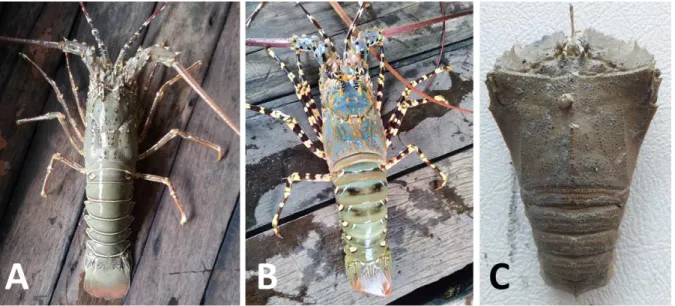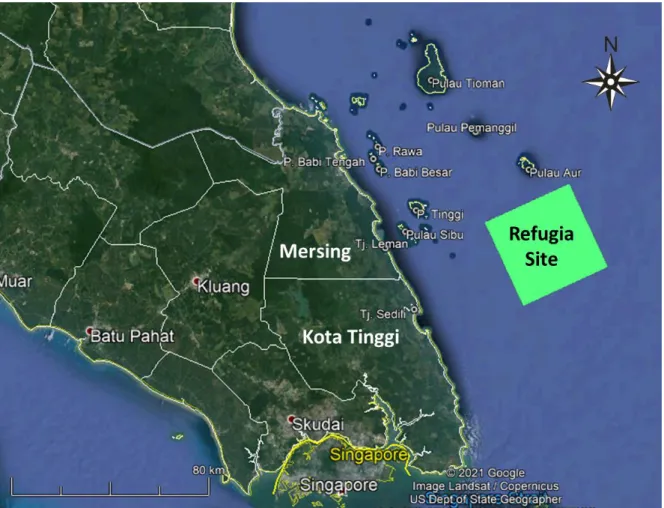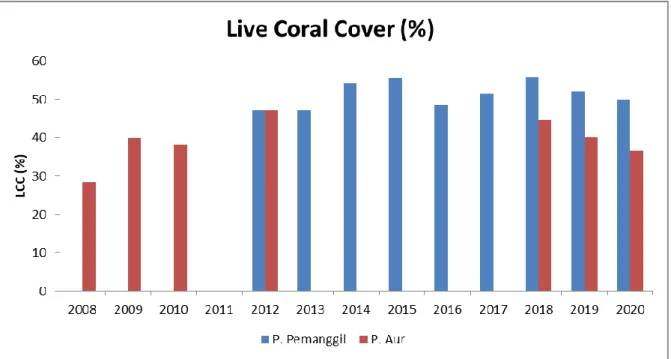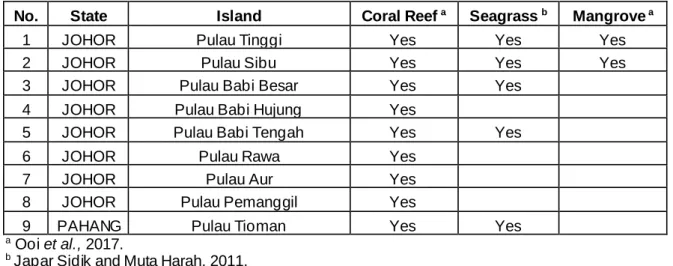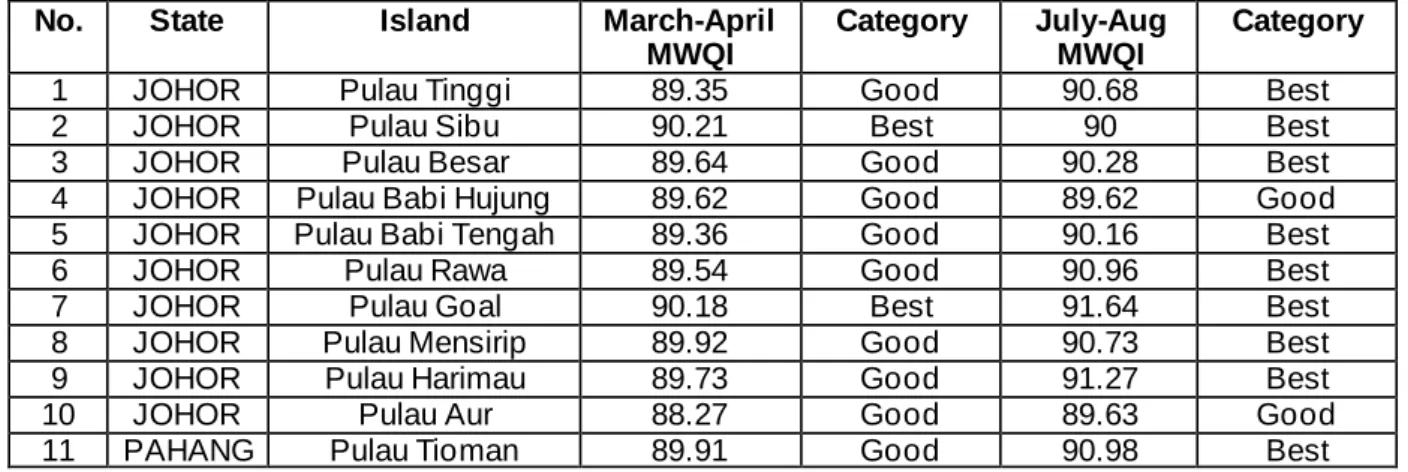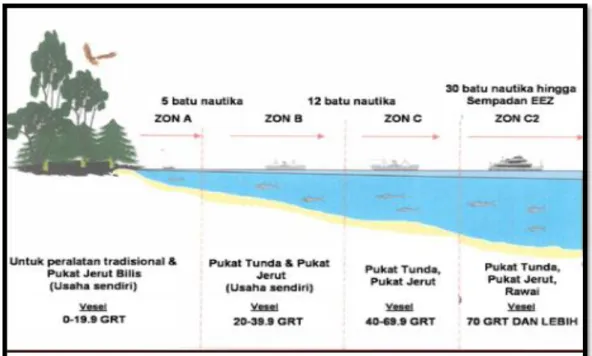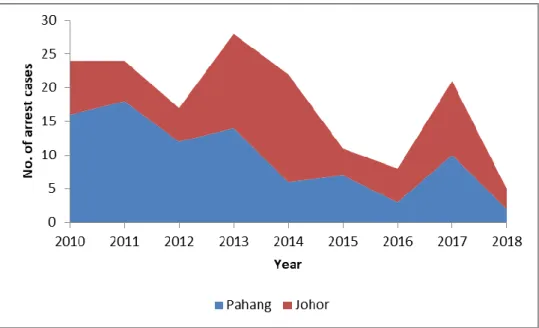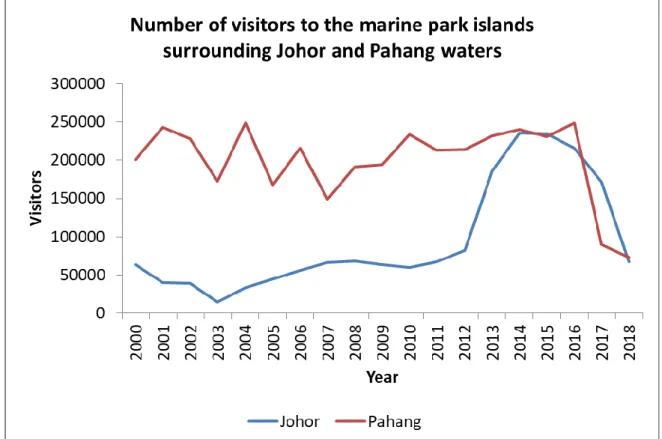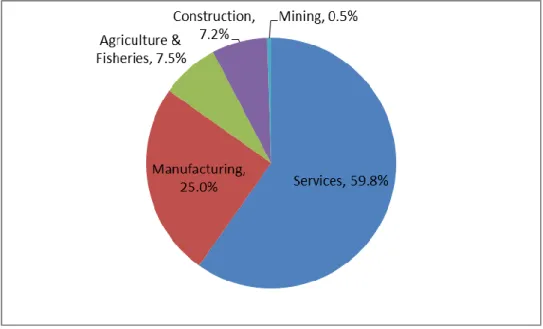SEAFDEC-UNEP-GEF-MALAYSIA: REP-MY36
Establishment and Operation of a Regional System of Fisheries Refugia in the South China Sea and Gulf of Thailand
SITE CHARACTERIZATION OF THE SPINY LOBSTER REFUGIA IN EAST JOHOR,
PENINSULAR MALAYSIA
RYON SIOW FRI KAMPUNG ACHEH
DEPARTMENT OF FISHERIES, MALAYSIA
SOUTHEAST ASIAN FISHERIES DEVELOPMENT CENTER TRAINING DEPARTMENT
SEAFDEC-UNEP-GEF-MALAYSIA: REP-MY36
First published in Phrasamutchedi, Samut Prakan, Thailand in December 2022 by the SEAFDEC-UNEP-GEF Fisheries Refugia Project, Training Department of the Southeast Asian Fisheries Development Center
Copyright © 2022, SEAFDEC-UNEP-GEF Fisheries Refugia Project
This publication may be reproduced in whole or in part and in any form for educational or non-profit purposes without special permission from the copyright holder, provided acknowledgment of the source is made. The SEAFDEC-UNEP-GEF Fisheries Refugia Project would appreciate receiving a copy of any publication that uses this as a source.
No use of this publication may be made for resale or for any other commercial purpose without prior permission in writing from the SEAFDEC Secretary-General.
Southeast Asian Fisheries Development Center Training Department
P.O.Box 97, Phrasamutchedi, Samut Prakan, Thailand Tel: (66) 2 425 6100
Fax: (66) 2 425 6110
https://fisheries-refugia.org and https://seafdec.or.th
DISCLAIMER:
The contents of this report do not necessarily reflect the views and policies of the Southeast Asian Fisheries Development Center, the United Nations Environment Programme, and the Global Environment Facility.
For citation purposes this document may be cited as:
Siow, Ryon. 2022. Establishment and Operation of a Regional System of Fisheries Refugia in the South China Sea and Gulf of Thailand, Site Characterization of the Spiny Lobster Refugia in East Johor, Peninsular Malaysia.
Southeast Asian Fisheries Development Center, Training Department, Samut Prakan, Thailand; FR/REP/MY36, 21 p.
Southeast Asian Fisheries
Development Center United Nations
Environment Programme Global Environment Facility
Site Characterization of the Spiny Lobster Refugia in East Johor, Peninsular Malaysia
Prepared by:
Ryon Siow FRI Kampung Acheh
Biological component
Spiny lobsters are considered a high value commercial species in Malaysia. In the East Coast of Peninsular Malaysia, it is documented that there are at least five species of spiny lobsters, namely Panulirus polyphagus, P. versicolor, P. homarus homarus, P. longipes longipes and P. ornatus (Alias et al., 2000). Among these five species, P. polyphagus is the most dominant commercial species and can be found in abundance in East Johor waters. In addition, P. ornatus (and P. vesicolor to a lesser extent) were also occasional caught by fishermen in the surrounding waters of the refugia site (Figure 1).
Figure 1: The type of lobsters found at the refugia site: (A) P. polyphagus, (B) P.
ornatus, (C) Thenus orientalis
Morphologically the Palinurid spiny lobsters differ from the true lobsters such as Homarus spp. (in the Atlantic Ocean), in that they lack the large chelae (claw) usually associated with true lobsters (Siow et al., 2021a). However, the spiny lobsters are taxonomically more related to the slipper lobster (Scyllaridae) such as Thenus orientalis, and both P. polyphagus and T. orientalis can be found in abundance in East Johor waters (Siow et al., 2021a).
In the life cycle of the mud spiny lobster (P. polyphagus), the juvenile lobsters are usually found along the shallow coastal habitat while the adult lobsters are usually found in the deeper sea bed of East Johor waters. Thus, the adult lobsters are often caught by bottom net trawlers while traditional fishermen such as traps and drift nets operators target the juvenile lobsters. Spiny lobsters are nocturnal animals, which spend most of their time hiding in rocky crevices to avoid predators and only come out occasionally to find food, especially during the night.
Every year, young adult spiny lobsters will embark on a migration to deeper sea from their coastal habitat for breeding and spawning purposes (Alias et al., 2000). This breeding and migration season begins in early July and by August the number of gravid females aggregating in the spawning area will be higher than other time.
During this critical moment, the spiny lobster population is susceptible to overfishing due to the risk of capture by the fishermen. A close season implemented during this critical spawning period will greatly enable the spiny lobster to reproduce and release the next generation of lobster (phyllosoma) into the sea.
Ecological component Marine Habitats
The East Johor coastline spans about 247 km, from Pengerang at the southern tip of the Peninsular Malaysia to Endau, bordering Pahang State. There are
72 islands in the state, with most islands already gazetted as National Marine Parks and State Marine Parks (also known as Sultan Iskandar marine Park, SIMP) (Khairul Nizam et al., 2015).
The spiny lobster refugia site is located at the open sea area near Pulau Aur, East Johor (Figure 2). The average water depth at the refugia site is about 40 meter. The bottom sediment type consist of mud and sand or the combination of both. The area is a regular fishing ground frequented by bottom trawl fishermen in the area. Nearby the refugia area are numerous islands with various marine habitats such as coral reef, seagrass meadows and mangrove forest.
Figure 2: Map showing the location of the spiny lobster refugia site (green box), covering an area of approximately 1400 km2 at East Johor, Peninsular Malaysia
The coral habitat commonly found at the surrounding islands near the refugia site are the fringing reef type. There are an estimated 249 hard coral species from 70 genera documented at the coral reef habitats surrounding the refugia site (Ooi et al., 2017). Periodical monitoring of coral reef health were conducted by the Reef Check Malaysia at the islands surrounding the refugia site and they have reported that the state of live coral cover for Pulau Aur ranged between 28 % to 47% while at Pulau Pemanggil ranged between 47% to 56% annually (Figure 3) (Reef Check Malaysia, 2020). The coral reef habitat is important for the spiny lobster life cycle as it serves as a temporary habitat for spiny lobsters during their breeding period and before the final migration to deeper water for spawning.
Figure 3: Live coral cover (%) at Pulau Aur and Pulau Pemanggil throughout the year 2008-2020 (Reef Check Malaysia, 2008-2020)
There are two main seagrass meadows found at Pulau Tinggi and Pulau Sibu subtidal area (Table 1). The combined size of meadows from this two islands is estimated to be about 7.06 km2 (Ooi et al., 2017). Elsewhere, there are also reported seagrass patches at other islands such as Pulau Babi Besar, Pulau Babi Tengah
and Pulau Tioman (Japar Sidik and Muta Harah, 2011). There are about 12 species of seagrass available, but Halophila ovalis and Halodule uninvervis dominated the Pulau Tinggi meadow while Enhalus acoroides and Cymodocea serrulata dominated the Pulau Sibu seagrass community (Ooi et al., 2017).
Meanwhile, mangrove forests can be found at Pulau Tinggi and Pulau Sibu (Ooi et al., 2017). As mangrove forest thrive in muddy substrate not commonly found at the islands nor the coastal beaches of East Johor, it is difficult to find other location with substantial mangrove forest in the vicinity of the refugia site. It is also noted that the species Rhizophora stylosa (an uncommon species), was recorded at the mangrove forest at Pulau Tinggi and Pulau Sibu (Ooi et al., 2017). Most of the coastal landscape along the mainland districts of Mersing and Kota Tinggi consist of rocky and sandy beaches with terrestrial plants such as Casuarina trees but mangrove trees are not common here.
Table 1: Marine habitats (Coral Reef, Seagrass, Mangrove) availability at the surrounding islands in the vicinity of the refugia site
No. State Island Coral Reef a Seagrass b Mangrove a
1 JOHOR Pulau Tinggi Yes Yes Yes
2 JOHOR Pulau Sibu Yes Yes Yes
3 JOHOR Pulau Babi Besar Yes Yes
4 JOHOR Pulau Babi Hujung Yes
5 JOHOR Pulau Babi Tengah Yes Yes
6 JOHOR Pulau Rawa Yes
7 JOHOR Pulau Aur Yes
8 JOHOR Pulau Pemanggil Yes
9 PAHANG Pulau Tioman Yes Yes
a Ooi et al., 2017.
b Japar Sidik and Muta Harah, 2011.
Oceanography
The water quality at the refugia site and the surrounding waters are considered to be relatively good (Marine Park Malaysia, 2021). The average Marine Water Quality Index (MWQI) for the nearby islands in the months of March-April was
89.6 while for the months of July-August was 90.5 (Table 2). As many of the islands in East Johor are marine parks as well as popular tourist sites, the main source of pollution would be from tourism related activities as well as terrestrial runoff (Khairul Nizam et al., 2015). However, the water quality level at present is still good for the spiny lobster refugia.
Table 2: Marine Water Quality Index (MWQI) of Marine Park Islands in East Johor and Pahang (Marine Park Malaysia, 2021)
No. State Island March-April
MWQI
Category July-Aug MWQI
Category
1 JOHOR Pulau Tinggi 89.35 Good 90.68 Best
2 JOHOR Pulau Sibu 90.21 Best 90 Best
3 JOHOR Pulau Besar 89.64 Good 90.28 Best
4 JOHOR Pulau Babi Hujung 89.62 Good 89.62 Good
5 JOHOR Pulau Babi Tengah 89.36 Good 90.16 Best
6 JOHOR Pulau Rawa 89.54 Good 90.96 Best
7 JOHOR Pulau Goal 90.18 Best 91.64 Best
8 JOHOR Pulau Mensirip 89.92 Good 90.73 Best
9 JOHOR Pulau Harimau 89.73 Good 91.27 Best
10 JOHOR Pulau Aur 88.27 Good 89.63 Good
11 PAHANG Pulau Tioman 89.91 Good 90.98 Best
The sea condition surrounding the refugia site is subjected to the seasonal monsoon seasons. There are two prominent monsoon seasons at play, namely the north-east monsoon (from November to March) and the south-west monsoon (from April to August). The effects of the north-east monsoon is felt significantly more by fishermen in the refugia area as strong northeasterly winds stress of nearly 0.3 N.m-2 causes a strong southwesterly current (Mohd. Fadzil, 2012). On the contrary, the south-west monsoon brings relatively weaker winds stress (over 0.1 N.m-2) which drive a northward coastal current off east Malaysia (Mohd. Fadzil, 2012).
Subsequenty, the current flows northward during the southwest monsoon with the maximum speed of 0.4 m/s but in opposite direction in the northeast monsoon with the maximum speed of 1 m/s (Mohd. Fadzil, 2012). The current movement pattern is very important to the life cycle of the spiny lobster as the newly hatched phyllosoma
(larval stage of spiny lobster) are planktonic in nature and their movement are totally relied on the sea current movement pattern.
Socio-economy
Fishermen community
Malaysia practices a fishing zoning system to manage the type of fishing gears and boat capacity permitted depending on the distance of the fishing area to the shoreline. In East Johor and Pahang waters, there are basically 4 fishing zones namely zone A (less than 5 nautical miles from the shoreline using only traditional gears), zone B (5 to 12 nautical miles from the shoreline), zone C (12 to 30 nautical miles from the shoreline) and zone C2 (30 nautical miles to the EEZ) (Figure 4).
Figure 4: Fishing zoning system in East Johor and Pahang to manage the type of fishing gears and boat capacity permitted depending on the distance of the fishing area to the shoreline (Department of Fisheries Malaysia)
The fishing community involved in the spiny lobster fishery around the refugia site consists of traditional drift nets and traps fishermen as well as commercial trawl net fishermen. A total of 300 traditional fishermen are operating drift nets and lobster traps at coastal waters less than 5 nautical miles from the shore (Table 3). Another 80 trawlers boats with a total of 251 fishermen are involved the bottom trawling further out at sea (beyond 5 nautical miles from the shore).
Table 3: Number of fishing licenses and fishermen involved in the lobster fishery around the refugia site
District Drift Net/Traps
(Zone A) No. of licenses
Trawl Net (Zone B/C) No. of licenses
Endau/Mersing 40 60
Sedeli 60 20
Pengerang 50 0
Total licenses 150 80
No. of fishermen 300 251
The marine parks surrounding the refugia site are also important habitats for commercial fish species which utilize the coral, seagrass and mangrove habitats available as breeding and nursery grounds. Thus, the concentration of marine fishes is higher in those areas. As marine parks in Malaysia are designated as no take zone area, no fishing activity is allowed in the two nautical miles distance from the islands shoreline. Over the years (2010-2018), the number of arrest cases by the enforcement in the marine parks at Pahang and Johor states have gradually decreased (Figure 5).
Figure 5: Number of arrest cases by the enforcement in the marine parks at Pahang and Johor states
The tourism activities
The marine park islands surrounding Johor and Pahang waters are popular tourist destinations. As of year 2018, about 67,000 visitors visited the islands in Johor while another 73,000 visitors visited Tioman island in Pahang (Figure 6).
These figures were actually much lower than a few years back (year 2013-2016) where the number of visitors reached over 200,000 annually.
Figure 6: Number of visitors to the marine park islands surrounding Johor and Pahang waters
To support the tourism at the marine parks, many island and coastal inhabitants are involved in the service and hospitality industry. There are about 70 resort operators, 22 dive operators and 47 boat operators at Pulau Tioman while a total 17 resort operators are located throughout the islands in Johor (Table 4). Another 5 dive operators are located at Pulau Aur and Pulau Sibu while 3 boat operators ply their trade from Mersing. The coastal town of Mersing is a gateway to many of the islands around the refugia site and itself has about 7 resorts and hotels.
Table 4: Number of resorts, dive operators and boat operators in the vicinity of the refugia area
State Location No. of resorts No. dive operators No. of boat operators
Pahang Pulau Tioman 70 22 47
Johor
Pulau Aur 4 3
Pulau Babi Besar 4
Pulau Sibu 5 2
Pulau Tinggi 2 Pulau Pemanggil 2
Mersing 7 3
Demography
The refugia site is located offshore from two East Johor districts, namely Mersing dan Kota Tinggi Districts. The population of Mersing district in year 2019 was 83,800 consisting of 44,700 males and 39,100 female individuals while the population of Kota Tinggi district in year 2019 was 227,800 consisting of 119,800 males and 108,000 female individuals (BPEN Johor, 2021).
The birthrate of Mersing and Kota Tinggi districts in year 2019 were 20.4 and 19.9 per 1000 people respectively (Department of Statistics Malaysia, 2020). Meanwhile, the deathrate of Mersing and Kota Tinggi districts were 7.6 and 7.2 per 1000 people respectively (Department of Statistics Malaysia, 2020). The life expectancy was estimated to be about 72.8 years for male and 77.9 years for female (Department of Statistics Malaysia, 2020).
The median monthly household gross income of people in Mersing and Kota Tinggi districts in year 2019 were RM3,896 and RM5,475 respectively while the mean monthly household gross income of people in Mersing and Kota Tinggi districts in year 2019 were RM4,937 and RM6,982 respectively (Department of Statistics Malaysia, 2020).
Basic utilities such as electricity is supplied to 100% of the population while direct clean water supply (piped) reached 98.3% and 98.8% of households in Mersing and Kota Tinggi districts respectively (Department of Statistics Malaysia, 2020). There are a total of 38 primary schools and 10 secondary schools in Mersing while there are 83 primary schools and 28 secondary schools in Kota Tinggi district (BPEN Johor, 2021). Both Mersing and Kota Tinggi have a government hospital each and numerous other health clinics (BPEN Johor, 2021).
The labor force in Johor was 1,756,100 in the year 2019. The percentages of labor force participation by sector in Johor was dominated by the service sector (59.8%), followed by manufacturing (25.0%), agriculture and fisheries (7.5%), construction (7.2%) and mining (0.5%) (Figure 7) (Department of Statistics Malaysia, 2020). Male labor force participation rate was 82.6% while female labor force participation rate was 56.5% (BPEN Johor). Meanwhile the unemployment rate was 2.7%
(Department of Statistics Malaysia, 2020).
Figure 7: Percentages of labor force participation by sector in Johor (Department of Statistics Malaysia, 2020).
The main economic activities in Mersing district are tourism, maritime activities, fisheries, agriculture and light manufacturing (coffee, timber and other agriculture based products). Likewise, the main economic activities in Kota Tinggi district are tourism, agriculture, biotechnology based agriculture, oil and gas industry (Pengerang) (BPEN Johor, 2021).
The inhabitants of the islands around the refugia sites mostly consist of workers in the service and hospitality sector, civil services and fisheries. As most islands in East Johor are accorded marine park status, fishery activities are only permitted outside the park boundary (2 nautical miles from the island shoreline).
Pulau Aur (N2° 26.198', E104° 31.571') is the nearest island to the refugia site and is located about 76.8 km from Mersing. It has a land size of about 7.2 square kilometer and is populated by about 217 inhabitants (Mersing District Office, 2021). The main economic activities at this island are tourism, agriculture and fisheries. Basic amenities such as clean water, electricity and telecommunication are available.
There are also other facilities such as mosque (2 units), postal office, police post, one school and two community halls (Mersing District Office, 2021). There are also at least 4 resorts and 3 dive operators at Pulau Aur.
The next island is Pulau Pemanggil (N2° 34.510', E104° 19.962'). It is located about 65 km from Mersing. It has a land size of about 6.4 square kilometer and is populated by about 161 inhabitants (Mersing District Office, 2021). As with Pulau Aur, the main economic activities at this island are tourism, agriculture and fisheries.
Basic amenities such as clean water, electricity and telecommunication are available. There are also other facilities such as a mosque, postal office, police post, one school and a community hall (Mersing District Office, 2021). There are also at least a couple of resorts on Pulau Pemanggil. Other islands in the vicinity of the refugia site is listed in the table below (Table 5).
Table 5: List of islands and villages in the vicinity of the refugia site
Main Island Associated Islands List of Villages Pulau Sibu - Pulau Sibu Besar
- Pulau Sibu Tengah - Pulau Papan
- Pulau Tokong Sanggoe - Pulau Tokong Gantang - Pulau Tokong Condong - Pulau Tokong Rakit - Pulau Lima Besar - Pulau Lima Kecil - Pulau Hujung - Pulau Yu - Pulau Kukus
1. Kampung Duku Kecil (main village) 2. Kampung Darat
3. Kampung Lingka 4. Kampung Tagal
Pulau Babi Besar
- Pulau Mertang Barat - Pulau Mertang Tengah - Pulau Mertang Timur - Pulau Harimau - Pulau Mensirip - Pulau Gual
- Pulau Kelebang Pari - Pulau Rawa
- Pulau Hujung - Pulau Tengah - Pulau Besar - Batu Sakit Mata - Malang Tikus
1. Kampung Atap Zing 2. Kampung Batu Hitam
Pulau Tinggi - Pulau Tinggi - Pulau Ibol - Pulau April - Pulau Mentigi - Pulau Nanga Kecil - Pulau Nanga Besar - Pulau Penyabong - Pulau Simbang - Pulau Lanting - Batu Murau - Batu Gebang
1. Kampung Tanjung Balang (main village) 2. Kampung Pasir Panjang
3. Kampung Sebirah
Pulau Aur - Pulau Aur - Pulau Dayang - Batu Lang - Batu Pinang
1. Kampung Teluk Berhala (main village) 2. Kampung Teluk Meriam
3. Kampung Teluk Sebukang Pulau Pemanggil - Pulau Pemanggil 1. Kampung Buau (main village)
2. Kampung Pak Kaleh 3. Kampung Sulit 4. Kampung Pontianak (Source: Mersing District Office, 2021)
Annual landing of spiny lobsters in East Johor
The spiny lobster fishery in East Johor mainly focused on three main gears, namely bottom trawl nets, drift nets and lobster traps. While the drift nets and traps are operated by traditional fishermen in the shallow coastal waters less than 5 nautical miles from the shoreline, commercial bottom trawlers which operate at deeper waters (above 5 nautical miles) do catch spiny lobsters as bycatches in their fishing operation. However, the landing trend of spiny lobsters in East Johor has been on the decline (Figure 8). From an annual landing of more than 330 metric ton in year 1988, the current landing has decreased to less than a third in year 2019 (DOFM, 2021). Annually, the landing of spiny lobsters usually increases toward the latter part of the year during the onset of the northeast monsoon (October to March).
Fishing activities during the monsoon season would likely be affected by the constant bad weather but for those who braved the choppy sea would likely catch more spiny lobsters.
Figure 8: Annual landing of spiny lobsters from East Johor for year 1988-2019 (Source: Annual Fisheries Statistics, 1988-2019)
Calculation of Maximum Sustainable Yield (MSY) for the spiny lobster resources in East Johor waters was carried out using the landing data and based on the Schaefer Model (Sparre and Venema, 1998). The analysis indicated that the current MSY level for the spiny lobsters in East Johor waters was at 129 metric ton with fMSY at the level of 8283 units per year (effort was standardized based on the effort of drift nets) (Figure 9). For the sustainable management of spiny lobster resource, the annual spiny lobster landing in East Johor area should not exceed the MSY value of 129 metric ton (Siow et al., 2021b).
A resource study conducted in the refugia site in year 2019 (Siow, 2021) indicated that the average density of spiny lobsters was 1.05 kg.km-2 and the biomass of spiny lobsters in the refugia area (size1400 km2) was estimated to be about 2.94 metric ton (Biomass = Density/q*Area, where q=0.5) (Sparre and Venema, 1998). However, the distribution of spiny lobsters in East Johor are not uniform and highly scattered throughout the sea floor and only aggregate in bigger number during specific stages of their life cycle such as during spawning season.
Figure 9: Schaefer Model of the spiny lobster resource in the East Johor waters.
MYS was estimated to be about 129 metric ton with fMSY = 8283 units per year (effort was standardized based on the effort of drift nets)
References
Alias, M., Nurhanida, D., Abd. Rahman, M. & Rajendran, K. 2000. Distribution, habitat and life cycle of the Mud Spiny Lobster Panulirus polyphagus in the East Coast of Peninsular Malaysia. National Fisheries Symposium, Johor Bahru, Department of Fisheries Malaysia.
BPEN Johor. 2021. Basic data on the state of Johor 2019. Bahagian Perancang Ekonomi Negeri Johor (Johor State Economic Planning Division). Link:
https://bpen.johor.gov.my/wp-content/uploads/2021/02/DATA-ASAS-JOHOR- 2019-2.pdf
Department of Fisheries Malaysia (DOFM). 2021. Annual Fisheries Statistics 1988- 2019. DOF Executive Information System (EIS-COGNOS). Department of Fisheries Malaysia. Ministry of Agriculture and Food Industries Malaysia.
Department of Statistics Malaysia. 2020. eStatistik Johor. Link:
https://newss.statistics.gov.my/
Japar Sidik, B., & Muta Harah, Z. 2011. Seagrasses in Malaysia. In: Ogawa, H., Japar Sidik, B., Muta Harah, Z. (eds.). Seagrasses: resource status and trends in Indonesia, Japan, Malaysia, Thailand and Vietnam. Tokyo: Japan Society for the Promotion of Science (JSPS) and Atmosphere and Oc ean Research Institute (AORI), The University of Tokyo: Seizando-Shoten Publishing Co., Ltd. 22–37pp.
Khairul Nizam, M., M. See, Y.M. & Norazma, Z. 2015. Water Quality Assessment of Marine Park Islands in Johor, Malaysia. Bulletin of Environmental Science and Management, 3(2): 19-27.
Marine Park Malaysia. 2021. Water. Indeks kualiti air marin (MWQI) stesen pemantauan kualiti air marin Taman Laut bagi Fasa 1 dan Fasa 2. Link:
https://www.data.gov.my/data/ms_MY/dataset/indeks-kualiti-air-marin
Mersing District Office. 2020. Destinasi menarik. Link:
http://www.mdmersing.gov.my/ms/pelawat/destinasi-menarik
Mohd. Fadzil, M.A. 2012. Surface circulation and temperature distribution of southern South China Sea from Global Ocean Model (OCCAM). Sains Malaysiana 41(6): 701-714.
Ooi, J.L.S., Goh, H.C., Then, A.H.Y., Affendi, Y.A., Izarenah, M.R., Abu Muntalib, J.
2017. Status report on the marine environment of the Mersing Marine Park Island, and indicative proposal for a marine Protected area network.
Department of Marine Park Malaysia.
Reef Check Malaysia. 2020. Status of coral reefs in Malaysia, 2007 – 2020. Link:
https://www.reefcheck.org.my/annual-reports
Siow, R. 2021. The Study of Mud Spiny Lobster (Panulirus polyphagus) Distribution and Density in East Johor-South Pahang Waters: Observer-On-Board Survey 2019. In: Siow, R., Nur Hidayah, A. & Sallehudin, J. (eds.). Compilation of spiny lobster resource and fishery studies from year 2017-2020 for the
establishment of a fisheries refugia. Fisheries Research Institute, Department of Fisheries Malaysia.
Siow, R., Abd Haris Hilmi, A.A. & Nur Hidayah, A. 2021a. Lobster Resource Survey at East Johor Waters in Year 2016-2017. In: Siow, R., Nur Hidayah, A. &
Sallehudin, J. (eds.). Compilation of spiny lobster resource and fishery studies from year 2017-2020 for the establishment of a fisheries refugia. Fisheries Research Institute, Department of Fisheries Malaysia.
Siow, R., Zulkifli, T. & Hashim, S., 2021b. The Study of Spiny Lobsters Landings in East Johor-South Pahang Waters for the Establishment of a Fisheries Refugia Site. In: Siow, R., Nur Hidayah, A. & Sallehudin, J. (eds.). Compilation of spiny lobster resource and fishery studies from year 2017-2020 for the establishment of a fisheries refugia. Fisheries Research Institute, Department of Fisheries Malaysia.
Sparre, P. & Venema, S.C. 1998. Introduction to tropical fish stock assessment. Part 1. Manual. FAO Fisheries Technical Paper. No. 306.1, Rev. 2. FAO, Rome.
407p.
